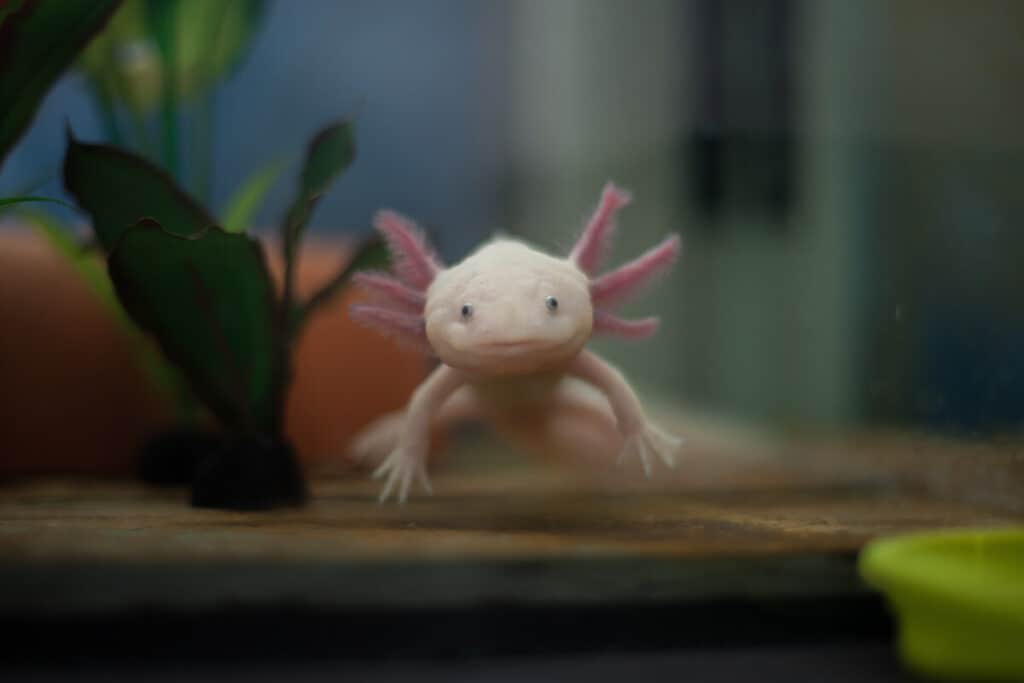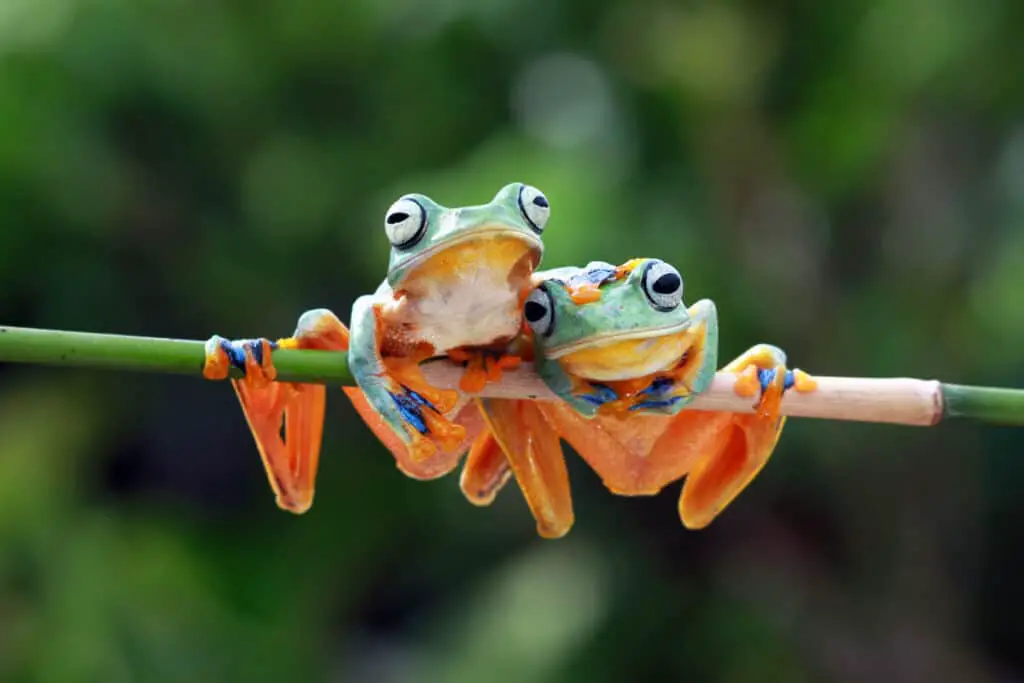Amphibians are fascinating creatures that can be found in many different areas of the world. Their ability to move both on land and in water makes them unique amongst animals.
In this article, we’ll explore how amphibians are able to move so gracefully in both worlds. We’ll look at their anatomy and the ways they use it to traverse both land and sea with ease.

Anatomy Of Amphibians
Amphibians are vertebrates that have moist skin and usually live part of their life in water and on land. They have four legs, a backbone, and a tail, like all vertebrates.
A key difference between amphibians and other vertebrates is the structure of their skin. Amphibian skin is thin with many glands that secrete moisture to keep the animal from drying out.
The way amphibians move depends mainly on where they live. In water, amphibians will typically swim using their tails and webbed feet. On land, they can hop, crawl or walk using their four limbs. Some species, such as salamanders, can even climb vertical surfaces by clinging to them with suction cups on their toes!
Amphibians also use their tails for balance while moving around in both aquatic and terrestrial environments. Their tails also help them maneuver quickly when they sense danger or need to avoid predators.
All of these factors make amphibians incredibly adaptive creatures capable of surviving in a variety of different habitats.
Walking And Climbing
Amphibians have complex physical structures that enable them to move in different ways. From their strong limbs to their webbed feet, they possess the necessary components for terrestrial and aquatic locomotion. Additionally, some amphibians have specialized features which give them extra mobility on land.
The first method of movement is walking. Amphibians use their four limbs to propel themselves across the ground and can move at a moderate speed. Depending on the species, some can even climb tree trunks and rocks with ease. This is due to the gripping capabilities of their toes and claws, as well as their slimy skin that helps them stick to surfaces.
Finally, amphibians are also capable swimmers. Using their powerful legs they are able to push themselves through water with ease, while also using their tail fins for added propulsion. They often rely on this skill when escaping predators or during mating season when they migrate from one body of water to another.
By combining all these methods of locomotion, amphibians are able to traverse in both land and water environments with ease.
Swimming
Amphibians are highly adapted to swimming as a means of locomotion. They have paddle-like feet and webbed toes that provide an efficient surface area for moving through the water. Their bodies are streamlined, helping them cut through the water with ease. Some species even possess a swim bladder, which works as an internal floatation device allowing them to conserve energy during long journeys.
Amphibians also use their tails for propulsion in the water by undulating or wiggling side-to-side. This is especially true for many salamanders, who may not even need to move their limbs when gliding through the water. Frogs and toads can also be seen using their hind legs in powerful kicks when making short dives.
On land, amphibians can be seen walking, hopping, running or crawling depending on the species and habitat they live in. They have adapted certain features such as sticky toe pads and muscular legs that help them grip onto surfaces and propel themselves forward quickly over short distances. In some cases, they may even use their tail muscles to hop from place to place like some lizards do!
Jumping
Amphibians are adept jumpers, using their powerful legs to propel themselves in a single leap. They also use other methods of locomotion, but jumping is one of the most common ways in which these animals move. This skill is especially useful for hunting prey or escaping predators.
The muscles found in amphibians’ hind legs are specially adapted for jumping and provide a great deal of leverage for leaping into the air with speed and agility. The combination of strong leg muscles with wide feet makes it possible for them to use their bodies to generate thrust from the ground up, providing them with the momentum they need to take off.
In addition, amphibians have long limbs which help them make adjustments while airborne and can even be used as a rudder to guide themselves through the air. This allows them to land precisely where they want and make accurate jumps without wasting energy on unnecessary movements or falls.
Amphibians’ impressive jumping ability gives them an advantage when it comes to catching food and avoiding predators, making it one of their most important forms of locomotion.
Adaptations For Movement
Amphibians are remarkable creatures, capable of moving in a variety of ways. They can use their limbs to crawl or swim, but they also rely on other methods of movement.
From gliding through the air to leaping from one spot to another, amphibians have adapted numerous techniques to get from place to place.
The most unusual method of amphibian movement is known as ‘rectilinear locomotion.’ This type of locomotion was first observed in the Mexican salamander, and involves the animal pushing itself forward using its tail. As it does this, it creates a series of downward steps with its feet that look like a staircase. By using this technique, amphibians can climb up steep slopes or over obstacles with ease.
In addition to rectilinear locomotion, some species of frog and salamander can also glide through the air thanks to specially adapted skin flaps on their sides. These flaps act like parachutes and allow them to jump from higher points while still being able to move forward towards their destination.
Amphibians are unique creatures that have evolved many fascinating adaptations for movement. With so many options available, they can easily navigate any terrain they might encounter!

Conclusion
Amphibians are incredibly fascinating creatures because of their ability to move in so many different ways. They have evolved different adaptations that allow them to survive in a variety of habitats, and each type of movement they use is suited to the environment they inhabit.
By understanding how amphibians move, we can further appreciate the complexity of these creatures and the roles they play in their habitats. We can also better understand the importance of preserving their environments for future generations.

